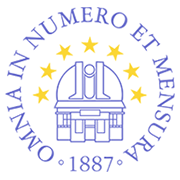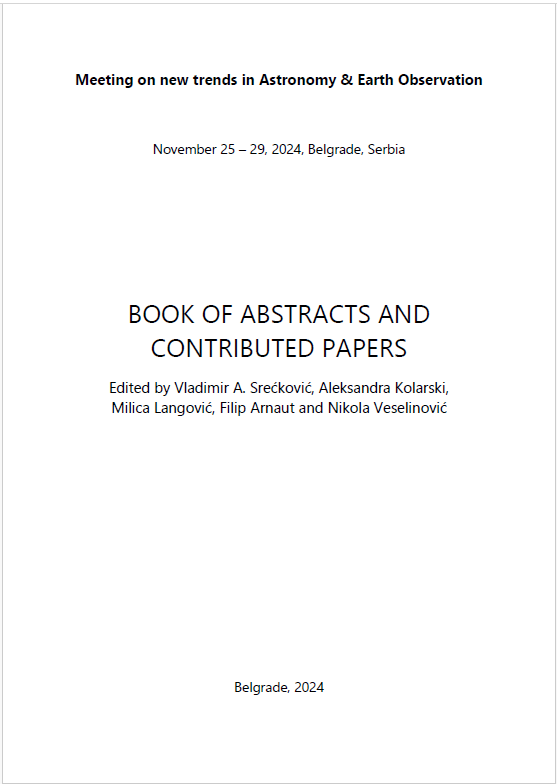PRELIMINARY ANALYSIS OF BAROMETRIC AND TEMPERATURE EFFECTS IN COSMIC MUON DATASETS SIMULATED USING CORSIKA
Mihailo R. Savić, Nikola B. Veselinović, Aleksandar L. Dragić, Dimitrije M. Maletić, Dejan R. Joković, Radomir M. Banjanac, David Knežević, Miloš Travar, Vladimir I. Udovičić.
Publication
BOOK OF ABSTRACTS AND CONTRIBUTED PAPERS - International scientific conference: Meeting on new trends in Astronomy & Earth Observation, Page 60-61, https://doi.org/10.69646/aob241219
BOOK OF ABSTRACTS AND CONTRIBUTED PAPERS - International scientific conference: Meeting on new trends in Astronomy & Earth Observation, November 25-29, 2024, Belgrade, Serbia, Edited by Vladimir A. Srećković, Aleksandra Kolarski, Milica Langović, Filip Arnaut and Nikola Veselinović
Published by: Scientific Society Isaac Newton Belgrade
Published: 15. 12. 2024.
Abstract
Abstract: Muon detectors are among the most widely used ground- based cosmic ray detectors, alongside neutron monitors. Due to the fact they detect higher energy primary cosmic rays, they serve as a complement to neutron monitors for long-term monitoring of cosmic ray variations and the study of space weather phenomena. Furthermore, alongside the existing independent detector setups and established networks, new muon detector networks are currently being developed and implemented.Secondary cosmic ray muons are sensitive to changes in atmospheric conditions, particularly variations in atmospheric pressure and temperature. Careful study of these effects offers a twofold benefit: first, it allows better understanding of the fundamental processes affecting muon propagation through the atmosphere; second, it allows the correction of atmospheric effects, thus increasing the sensitivity of muon detectors to variations of primary cosmic rays.Empirical models based on principal component analysis and machine learning have the benefit of taking into account the maximum information about the meteorological parameters. However, these are based on the assumption that all variations in muon count rates can be solely attributed to the change ofatmospheric parameters, and therefore introduce an inherent risk of overcorrection.To minimize this potential drawback, models can be trained and tested on datasets that exclusively reflect variations in atmospheric parameters. One way to produce such data is by using theCORSIKA package, which can simulate extensive atmospheric showers while incorporating changing atmospheric conditions. Here, we present an analysis of preliminary data generated through this approach to establish how effectively CORSIKA simulates atmospheric effects on cosmic ray muons. - FULL TEXT available in PDF.




